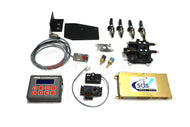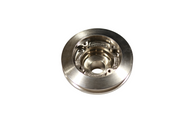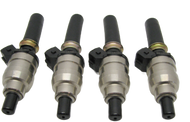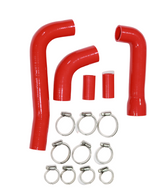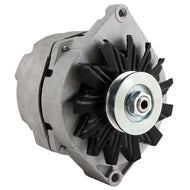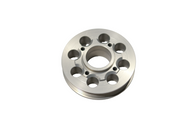The block diagram ( Fig 1) shows the general function of the L Jetronic system. The rings on the lines are connections across the PCB's.
Figure 1: Block diagram
The pictures 1 and 2 are there to help you finding the resistors on the lower and upper PCB's.

Pic 1: Lower PCB Pic 2: Upper PCB
The ignition pulses are taken into the ECU from the primary side of the ignition coil. They are scaled so that the peak is ~7V.

These pulses are then modified so that the rev-limit can be imposed by R106. The effect of the resistor is seen in the picture below. If the time of the pulses remains constant, than at certain revs the voltage no longer gets up, and the rev-limit has been reached. If the R106 is smaller, the time of the pulse decreases and the rev-limit raises.

These pulses are then subjected to a divide-by-2 network, giving the timing frame after which the L times the injection pulses. One pulse/one revolution of the engine.


The smaller the R103, the higher the limitation on the low-rpm dwell.

After this, the basic injection time thus limited is formed.

It is made according to the voltage measured from the air-flow meter. This voltage is put on the rail of the meter by applying the battery voltage to the rail. The voltage is also corrected for fluctuating battery voltages. The voltage swing is limited during cranking by R237 and R239 to compensate the back-firing and sudden collapses in manifold vacuum.

This signal is then brought to the upper board of the L-Jetronic. The off-idle enrichment, post-cranking enrichment and and coasting-cutoff are on this board. Off-idle and post-cranking only work below a R616 specified level of resistance on the coolant temperature NTC.

Other resistors are:
- R758 Fuel cut-off speed.
- R621 Off-idle enrichment max. Smaller value = more enrichment
- R624 Off-idle enrichment decay speed. Smaller value = faster decay
- R306 The timing of post-start enrichment. Bigger value = longer enrichment
- R617 Post-start and temp. enrichment amount. Smaller = less enrichment.

This signal is then brought back to the lower board and is used to charge a capacitor. The capacitor is then discharged according to coolant temperature, WOT switch state and intake air temperature. The WOT enrichment is fixed at ~9%.


The timing has now been figured out and the injectors are opened with a ~4Amps/injector. After ~.5 mSecs the total current is held at a current level determined by R408 (Typ. ~2A).
The total is as follows:

Engine warm, no WOT, Y is Dwell, X revs and curves percentage of air-flow openings. The exponential behavior corrects the logarithmic behavior of the air-flow meter flap.

